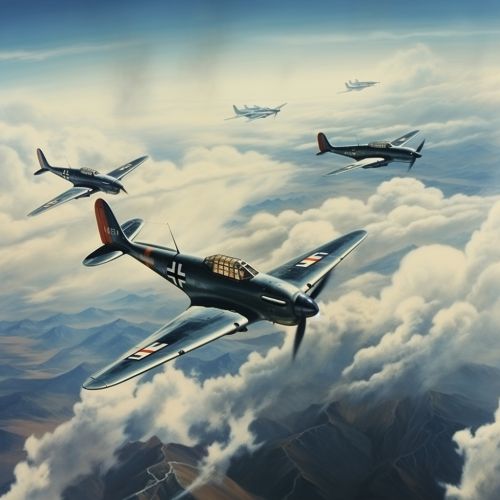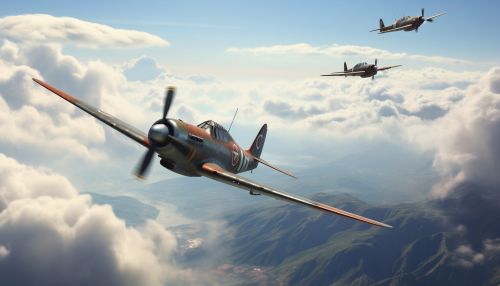Luftwaffe
Origins and Early History
The Luftwaffe was the aerial warfare branch of the German Wehrmacht during World War II. Its primary role was to support the German Army (Heer) by conducting aerial reconnaissance, tactical bombing, and providing defensive measures against enemy air attacks. The Luftwaffe was officially established on February 26, 1935, under the command of Hermann Göring, a prominent member of the Nazi Party and a close associate of Adolf Hitler. It was formed after the dissolution of the Treaty of Versailles, which had previously prohibited Germany from having an air force.


Structure and Organization
The Luftwaffe was divided into several branches, including the Fighter Force (Jagdwaffe), Bomber Force (Kampfwaffe), Reconnaissance Force (Aufklärungsgruppe), and Transport and Supply (Transportgruppe). Each branch was further divided into Geschwader, Gruppen, and Staffeln, equivalent to wings, groups, and squadrons in other air forces. The Luftwaffe also included ground-based units such as anti-aircraft artillery (Flak), searchlight units (Scheinwerfer), and airborne infantry (Fallschirmjäger).
Aircraft and Technology
The Luftwaffe employed a wide range of aircraft, from single-engine fighters to heavy bombers. Some of the most well-known aircraft include the Messerschmitt Bf 109, Focke-Wulf Fw 190, and Junkers Ju 87 "Stuka". The Luftwaffe was also at the forefront of jet aircraft development, with the Messerschmitt Me 262 being the first operational jet fighter in the world. In addition to aircraft, the Luftwaffe developed and used a variety of advanced technology, including guided missiles, radar, and jet engines.
Operations and Campaigns
The Luftwaffe played a crucial role in the early successes of Germany during World War II, particularly in the Blitzkrieg campaigns against Poland, France, and the Low Countries. However, the Luftwaffe's inability to achieve air superiority during the Battle of Britain marked a significant turning point in the war. Subsequent operations in the Eastern Front and North Africa further stretched the Luftwaffe's resources, leading to a decline in its effectiveness.
Decline and Dissolution
By 1944, the Luftwaffe was severely depleted due to a combination of heavy losses, fuel shortages, and a lack of trained pilots. Despite a series of desperate measures, including the use of jet fighters and the deployment of the Volkssturm (People's Storm), a militia composed of civilian volunteers, the Luftwaffe was unable to prevent the Allied air superiority. The Luftwaffe was officially disbanded in August 1946 by the Allied Control Council.
Legacy
Despite its ultimate defeat, the Luftwaffe left a significant legacy in the field of aviation. Many of its aircraft designs and technologies were ahead of their time and influenced the development of post-war aircraft. Moreover, the tactics and strategies developed by the Luftwaffe continue to be studied in military academies around the world.
